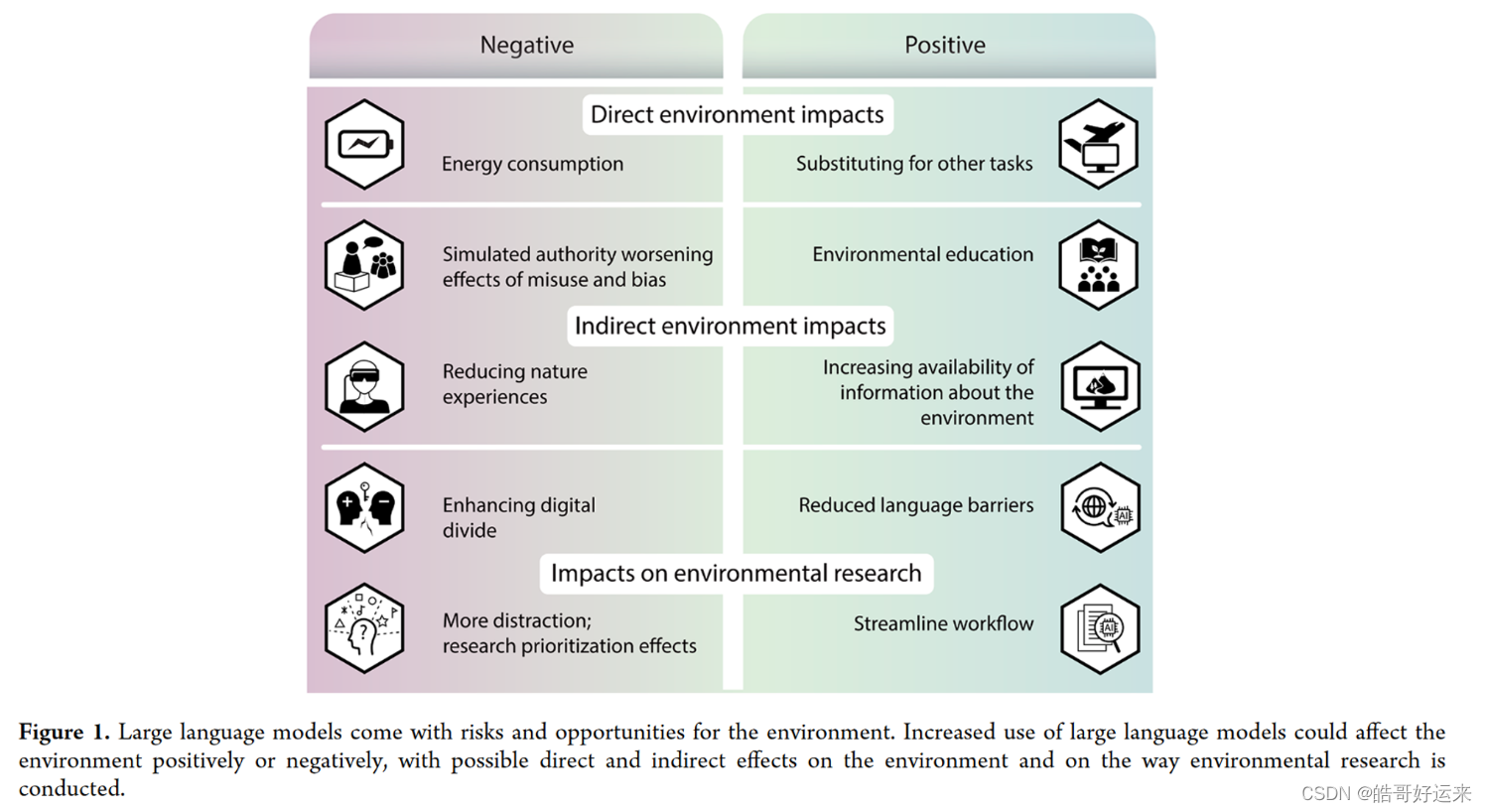第十一章 环境影响
This blog is based on datawhale files and a paper.

The initial consideration revolves around the potential positive or negative direct impact on the environment. Other transformative technological advancements, like the metaverse, are likely to directly affect the environment through heightened energy consumption, leading to increased resource usage and carbon dioxide emissions. This concern extends to LLMs, as both their training and inference processes demand substantial energy, emphasizing the need for algorithmic efficiency. The carbon footprint will be influenced by the energy consumption and carbon intensity of the energy source utilized. Furthermore, apart from carbon dioxide emissions, the computational facilities may also exert other environmental effects, such as water usage and soil pollution or sealing, which could have broader implications for environmental quality. On the other hand, it remains uncertain whether text-based chats in the future could partially substitute for video conferences or in-person meetings, which might otherwise entail greater resource consumption.
The increased use of LLMs may have important indirect consequences. One concern is the artificial expertise that LLM output appears to possess due to the extensive training data and polished language. This can lead to confusion with expert opinions, despite LLMs having limited ability to judge information reliability and relevance, partly due to their lack of natural language understanding. This can result in the creation of false output, as observed by those familiar with these apps in their own areas of expertise. Additionally, there is the potential for bias to be introduced at three points: the training data, the algorithm, and the form of output. Special interest groups and networks could exploit LLMs’ efficiency to generate text, potentially spreading misinformation under the guise of “artificial intelligence” and inundating public spaces with it.
However, unintentionally, the existing biases on complex environmental topics, such as environmental racism, climate change, biodiversity loss, and pollution, could be perpetuated and amplified by the training data used by LLMs. Conversely, creating informative content about environmental issues by individuals interested in environmental education could be made more efficient through LLMs. For instance, materials for environmental education could be more easily tailored for various target groups, such as different ages or educational levels.
LLM-based apps could either worsen or improve the digital gap within and between societies. These tools could further benefit those with good access to environmental information. On the positive side, LLMs could increase people’s involvement in environmental discussions, especially as they are offered in various languages. By providing a tool to improve their English scientific writing, LLMs could help more researchers from non-English speaking countries participate in environmental sciences.
However, relying more on technology-guided interactions could lead to fewer experiences in nature, potentially affecting how people appreciate biodiversity and ecosystems. On the other hand, the public could gain from unprecedented, current, accessible, and personalized information and educational opportunities on environmental issues. This could spark greater interest in environmental topics, thus improving environmental knowledge.
LLMs have many benefits for environmental science research, such as streamlining workflow and improving writing quality. However, there are concerns about potential distractions and misuse. It’s important to discuss these issues early and protect LLMs from undue influence. Governments and organizations should create policies to ensure unbiased information and increase literacy in LLM use.
END

















接口描述和消息示例)

接口描述和消息示例)